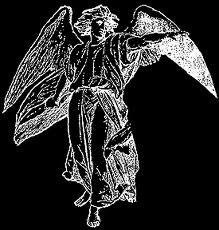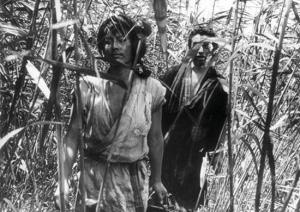Onibaba is set in the Japanese civil war of the 14th Century. If you go to IMDb and look up Onibaba the trivia will tell you two things.
1) It was refused classification by the English censor in 1965 because of the violence and nudity; but was passed in 1968, when it was approved with an X certificate with cuts.
2) The demon mask used in Onibaba inspired William Friedkin, the Exorcist’s director, to use make-up of a similar design in The Exorcist.
It doesn’t tell you that
1) Friedkin called it, ‘The scariest film I ever saw.’
And 2)
It doesn’t say that the destroyed face beneath the mask was inspired by the faces of those who survived the bombing of director, Kaneto Shindo’s home town of Hiroshima. Where Shindo had been born to a family of penniless farmers.
The film found fame as an art-house horror movie. It could equally well be described as a Marxist sex film, in that it uses nudity to sell politics. But both descriptions are horribly reductive.
Only the final third, in my opinion, is horror… The first third is a historical arthouse, if such a thing exists, and the middle third looks like a study of female sexual jealously, but can just as easily be viewed a study in mutual need. You should know that the actress palying the elder woman was Shindo’s business partner and later became his wife, and at the time of the film’s release, he said he sympathies were always with her.
The points to look out for are Hayashi’s brilliant score, which combines primitive drumming with avant-garde jazz. And the endless shots of the pampas grass waving in the wind. Shindo said he wasn’t interested in the high lords and the samurai, he wanted a film that conveyed the lives of people who didn’t appear in history books. People who lived like weeds.
This is it.

